The Continuum of Care That Saved Me

Making the Choice
I wasn’t sure what desperation truly felt like until those last days of using. At that very moment, it felt like my whole world had just exploded. I’d been in this position before: waking up on someone else’s couch, looking around for the next fix or at least coffee and a cigarette and trying my best to move along for the rest of the day.
That day seemed different though. Although I was in sunny Florida, all I could see was gray. Without admitting the exact nature, I knew not only was this run over, THE run was over. I did not have a backup plan. I didn’t see the silver lining. All I could do was tuck my tail between my legs and go home.
A funny thing happened along the way–and not ha-ha funny. My family finally had had enough as well and decided that I had two options: disownment or treatment. My sister led the charge that day and set me on my first steps into the recovery process. (If you’re looking for intervention tips, I found this article on intervention helpful). Little did I know I was experiencing the first day of the rest of my life and surrendering to a better way through a continuum of care.
What Is Continuum of Care?
“Continuum of Care” is a concept involving a system that guides and tracks patients over time through a comprehensive array of health services, spanning all levels and intensities of care.(1) The continuum of care covers the delivery of healthcare over a period of time.
Another term for continuum of care in addiction treatment or behavioral health is a “Recovery-Oriented System of Care.” The definition of an ROSC is “a coordinated network of community-based services and supports that is person-centered and builds on the strengths and resilience of individuals, families and communities to achieve abstinence and improved health, wellness and quality of life for those with or at a risk of alcohol and drug problems.” (2)
Success is Driven by Planning the Recovery Process Transitions
The continuum begins with an assessment, which can be a daunting task for someone coming into treatment for the first time—but it really doesn’t get any easier for those returning to treatment.
The idea for me, much like any other person in treatment, was not just to stop using but to also become a productive person as an adult in the community.(3) I had no idea exactly what I was doing; it was essentially listening to the professionals around me and accepting the plan of treatment.
Once I completed detox, I went into a short-term residential facility where I was introduced to the idea of recovery. From there, I was given 10 days of treatment where the seed was planted to continue on in a recovery house or sober-living environment.
I needed an additional four days of residential treatment before my bed was available at the recovery house. One of the benefits of this process was the fact that the transition happened on one campus and in one philosophical brand of treatment and recovery. Although recovery is often viewed with a “one day at a time” approach, staying in this continuum of care gave me the foundation and structure for the following nine months.
Lifelong Recovery is a Journey, Not an Event
Had I just gone to detox and rehab, I may have missed the experience and benefits of being in a continuum of care and would not have been introduced to a full spectrum of recovery options.
Although it’s hard to use empirical data to determine exact relapse rates for people in treatment, the numbers are not good.(4) The results indicate a 20-40 percent success rate for individuals who complete treatment. When a person is in a system of treatment and recovery for 90 days or longer, the success rates increase along that spectrum.
We can discuss statistics all day. However, for me, it was not only the psychosocial therapy I received in treatment that allowed me to be successful in my sobriety. It was the continued suggestion to maintain abstinence through a variety of methods, from professional help and healthier living to self-help groups such as Narcotics Anonymous and other 12-step programs.
Today I am a person in recovery. Over the last 14 years I have grown from a homeless person to having my own apartment and maintaining a job for an extended period of time. That would certainly have been enough at the beginning, but life has blossomed beyond my wildest dreams. I’ve owned a house, gotten married, have two beautiful children and have been a well-respected professional for over a decade now.
It is my belief that this was only possible because I took the opportunity to experience the benefits of a continuum of care and continued active participation in a 12-step group. My personal story of success may not be the same as everyone else’s, but I would vehemently stress the importance of this path for similar results.
Mike Loy, Assistant Director of Needs Assessment
Pyramid Healthcare
References:
- https://www.samhsa.gov/find-help/prevention
- https://www.samhsa.gov/sites/default/files/rosc_resource_guide_book.pdf
- https://www.drugabuse.gov/publications/principles-drug-addiction-treatment-research-based-guide-third-edition/frequently-asked-questions/how-effective-drug-addiction-treatment
- https://drugwarfacts.org/chapter/treatment#Effectiveness







